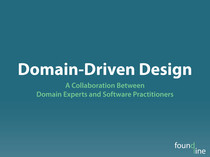To the Burlington, Vermont City Council on October 15th, 2012:
This is a statement from the current members of the Burlington Telecom Advisory Committee—often referred to as BTAC. The BTAC is a citizens committee created by the Burlington City Council and its Transportation, Energy, and Utilities Committee. Formed in 2004, the BTAC was designed to “include a measure of citizen input and oversight into the development and deployment of the telecommunications project.”
It is our understanding that the City Council is considering dissolving the BTAC and transferring its responsibilities to the Blue Ribbon Committee. The decision on whether or not to dissolve the BTAC is a decision to be made as part of a political process. We do not see the BTAC as a political entity, but rather as a governance and oversight body. As such, this statement is not intended to influence your decision one way or another. However, we feel that it is important to share our perspective on the future of Burlington Telecom and its governance in the absence of a citizens committee.
The governance and oversight of Burlington Telecom has long been a difficult and complex issue. In 2009, the City Council formed the Blue Ribbon Committee with two primary responsibilities: assess the viability of Burlington Telecom and assess all available options for the financial structure of Burlington Telecom. Due to the nature of the Blue Ribbon Committee’s work, much of its activity has been done in secret executive sessions.
This is not meant as a criticism of the Blue Ribbon Committee. We understand the reasoning behind this approach. The Blue Ribbon Committee feels that public knowledge of some information might put Burlington Telecom at a competitive disadvantage and that it would not be in the public interest for this information to be publicly known. We also understand that the Blue Ribbon Committee feels that conversations with potential Burlington Telecom investors, partners, or purchasers must be kept confidential, at least initially, in order to obtain the best possible terms for the citizens of Burlington. These are arguably good reasons for secrecy around the Blue Ribbon Committee’s work.
In contrast to the Blue Ribbon Committee, the BTAC rarely holds executive sessions and almost all of its activities are open to the public. There are many areas of Burlington Telecom’s governance where transparency better serves the interest of the public. Our concern is that, without the BTAC, transparency into Burlington Telecom’s operations will become almost non-existent. We urge you to consider the importance of transparency and to move forward with options that increase, not decrease, the level of transparency around Burlington Telecom.
The timing of this action is unfortunate. At its last regular meeting, the BTAC elected a new Chair who outlined three main goals for the BTAC moving forward. These goals were: improve communication between the BTAC, the City Council, and the Blue Ribbon Committee; increase public dialogue to channel input to and from the City Council; and define a clear role for the BTAC. We were looking forward to acting on, and have taken initial steps towards, these goals.
We joined the BTAC because we care about Burlington Telecom and the positive impact that we believe it can, and does, have on our city. Burlington Telecom is not just another telecommunications provider. It is critical infrastructure for the 21st century that is owned by us, the citizens of Burlington. This Fall, Burlington Telecom is rolling out 1 Gbps symmetrical broadband speeds. We are one of a handful of cities in the country with access to this type of bandwidth, putting us at a distinct economic advantage.
Market forces alone have failed to create the broadband infrastructure we need. According to Akamai’s Q1 2012 “State of the Internet” report, the United States is ranked 12th in broadband speed, with an average speed of 6.7 Mbps. This Fall, Burlington citizens and business will have access to broadband speeds 150 times as fast as the national average. In comparison, South Korea is ranked highest with an average broadband speed of 15.7 Mbps. Burlington citizens and business will have access to broadband speeds 65 times as fast as the fastest country’s national average.
Burlington Telecom is a critical part of our city’s infrastructure. It belongs to the citizens of Burlington. In order for us to continue to benefit from this infrastructure, it must be governed transparently. Thank you for your time.
 The latest issue of php|architect includes an article of mine on Building a Hypermedia API in CouchDB. The article’s description:
The latest issue of php|architect includes an article of mine on Building a Hypermedia API in CouchDB. The article’s description:




